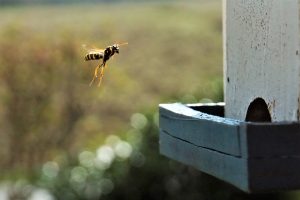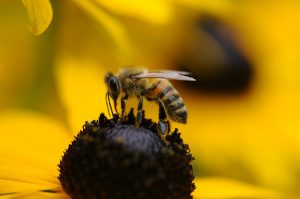Table of Contents
Brazilian Wasp Venom:
A Solution to Cancer Treatment
The Brazilian Social Wasp has been discovered to contain a certain chemical compound in its venom that not only kills cancer cells, but also prevents damaging non-cancerous cells.

The Brazilian Social Wasp a.k.a. Polybia Paulista is a “not so pretty” and friendly species from the bee family. Although honey bees are not friendly either, but they sure don’t look as fearsome as these.
Despite the differences, honey bees and Brazilian Wasps have one thing in common; they both have characteristics that contribute to humankind. The contribution of bees is well documented, but recently the Brazilian Social Wasp has been discovered to contain a certain chemical compound in its venom that not only kills cancer cells, but also prevents damaging non-cancerous cells.
How the Wasp Venom Works
Simply put, this venom has a toxic compound by the name of MP1 (Polybia-MP1) which kills only cancer cells. Polybia-MP1 is a type of peptide. The toxin apparently only attacks particular lipids on the cell membranes of cancer cells and creates holes on the surface.
The lipids or phospholipids, namely PS (phosphatidylserine) and PE (phosphatidylethanolamine) trigger Polybia-MP1 to react and subsequently, create big pores.
These pores, in turn, leak out essential components without which a cell ceases to function. It especially reduces the proportion of cancer cells in the prostate and bladder region. It has also shown reactivity towards leukemic cells that are multidrug-resistant. Leukemic T lymphocytes also show cytotoxic disruption from contact with the peptide.
———————-
“The venom differentiates the cancerous from the healthy cells through the detection of phospholipids PS and PE.”
———————-
The mechanism is pretty fascinating. A normal cell contains these two phospholipids along the inner lining of the cell membrane whereas cancerous cells contain these two phospholipids scattered on the outer lining of the cell membrane.
When the venom comes in contact with healthy cells, it does not find any of the two lipids and thus doesn’t react. On the other hand, when the venom comes in contact with the abnormal cancerous cells, it starts to react with the phospholipids present along the outer lining of the cell membrane. This creates large pores that drain essential components of the cells like its proteins and RNA, killing the cells.

Successful Wasp Venom Experiments
The research paper was published on September 1st, 2015 in Biophysical Journal. They performed a range of experiments using model membranes, imaging techniques, and membrane permeability assays for achieving results.
The model membranes were infused with PE and PS on the outer linings of the cell membranes or leaflets of the cell. The presence of the PE phospholipid resulted in an accelerated binding of the toxin to the cell membrane. Results show that the peptide’s binding accelerates as much as by a factor of 7 to 8.
Again, the presence of PE has been reported to show increases in larger pore formation. It is because the PE lipid makes the membranes more susceptible to get disrupted by the MP1 peptide. The PE lipid has been found to increase the permeability of the membranes by enabling wider pore formation on the transmembrane level.
In fact, the presence of PE shows to change the process of pore formation of the membranes completely. Thus, the MP1 peptide is assessed to work by the synergistic participation of PS and PE together.
The New Anti-Cancer Treatment
In this regard, one of the scientists and co-author of the paper, Paul Beales from the University of Leeds opined, “This could be useful in developing new combination therapies, where multiple drugs are used simultaneously to treat cancer by attacking different parts of the cancer cells at the same time.”
Researchers plan on adjusting the amino acid sequence of Polybia-MP1 to know more about how they function and ways to refine the venom. Thus, the venom can bring hope for oncologists and patients around the world.
Other Variants of Wasp Venom as an Antibiotic Drugs
Researchers from the Massachusetts Institute of Technology (MIT) recently revealed that the venom of wasps and bees can be reused as safe antibiotic drugs for humans. They have repurposed the venom found in South American wasps that consist of a toxin to become antibiotic drugs which are safe to human cells. The antibiotic drugs could kill bacteria that cause respiratory and other infections.

Related Articles:
- Wasp Facts: How Do Wasps Build Their Nest?
- Why Are Bees Attracted to Your Car?
- Wasps Nest Removal
- Beware of Hornet Sting
- Brazilian Wasp Venom Helps Treat Cancer
- Tarantula Hawk Wasps
- Carpenter Bee vs. Bumblebee
- How to Avoid the Harmful Wasp Sting
- Interesting Facts About Bees You Probably Didn’t Know
- Facts About Hornets: The Dangerous Species of Wasps
